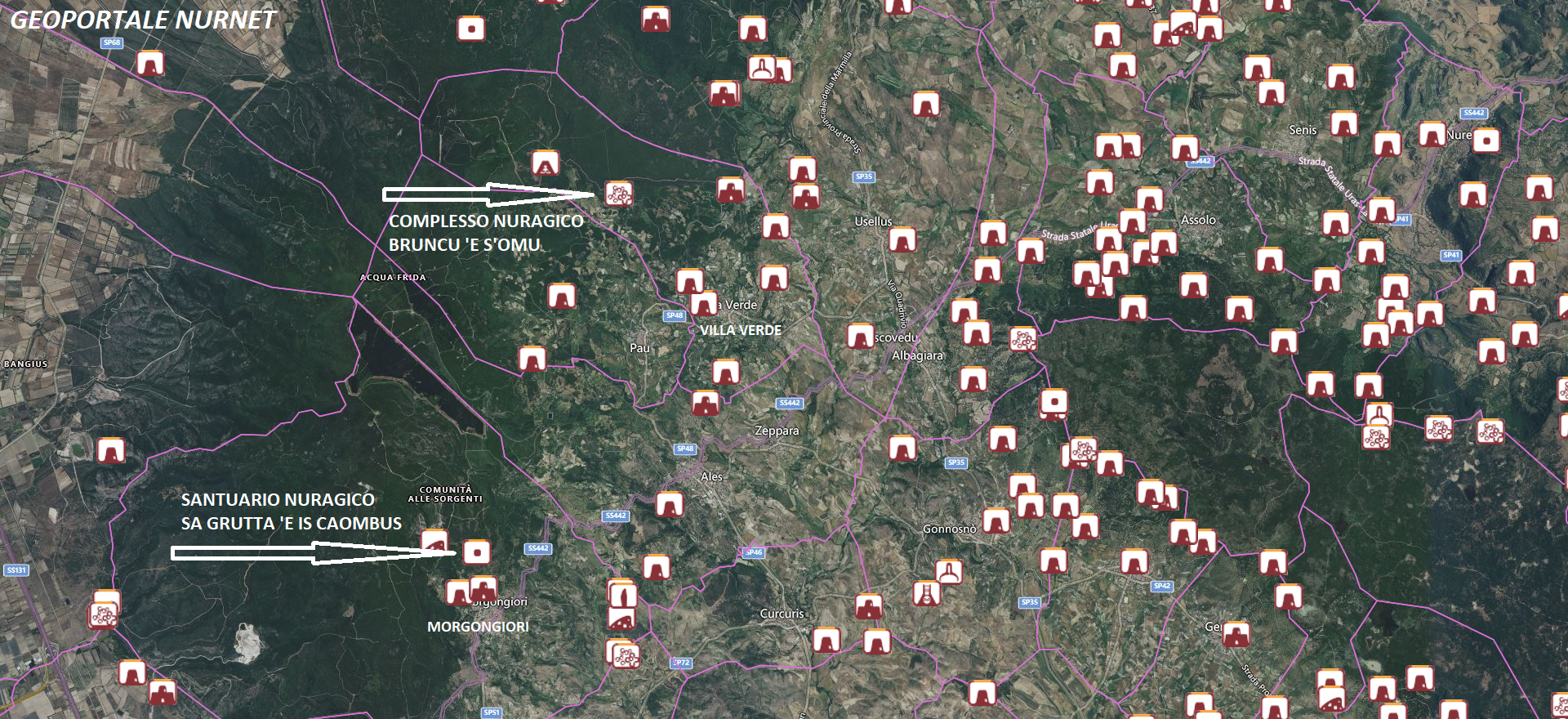94.2 and 94a.2: “Sa grutta ‘e is caombus” (cave of the pigeons), in the territory of Morgongiori, is a ‘fracture’ in the rock – technically a diaclase – that penetrates deep into the earth. The fissure, 150 meters long and one and a half meters wide, has been known to archaeologists since the mid-20th century. The first to cross its entrance and descend the cliff, upon reaching the bottom of the split, were astonished: they found, perfectly preserved, a staircase made of basalt stone, squared and one meter wide, composed of three flights, two visible (of 24 and 22 steps), the third covered with debris, interspersed with two landings (sa scaba ‘e cresia). The staircase winds along the fissure, in “a subterranean network of narrow and winding pathways,” as defined by the ‘father’ of Sardinian archaeology Giovanni Lilliu. At the base of the flights, rainwater collects. All the steps consist of two squared basalt blocks ‘to measure’ and were constructed by inserting a wedge-shaped block between them. Some have circular hollows, interpretable as basins with a lustral function, while others feature mammillary reliefs, referable to the Mother Goddess, similar to those of nuragic temples, wells, and mégarons, and of the tombs of Giants.
The nuragic complex Bruncu ‘e s’Omu, in Villa Verde, consists of a nuraghe, made up of a central tower located at the top of a basalt hill and various added bodies positioned along the slopes of the same elevation, which were the subject of archaeological investigations in 2003, and an important hut village, located on the southeastern slopes of the hill.
The photos of the nuragic sanctuary Sa Grutta ‘e is Caombus are by Alessandro Pilia and Bibi Pinna. Those of the nuragic complex Bruncu ‘e s’Omu are by Nicola Castangia, Franco Vacca, Bibi Pinna, and Pietrino Mele.
















